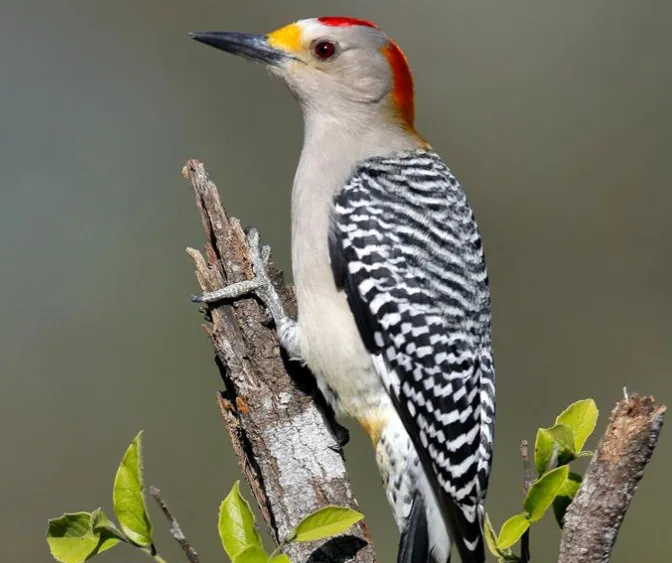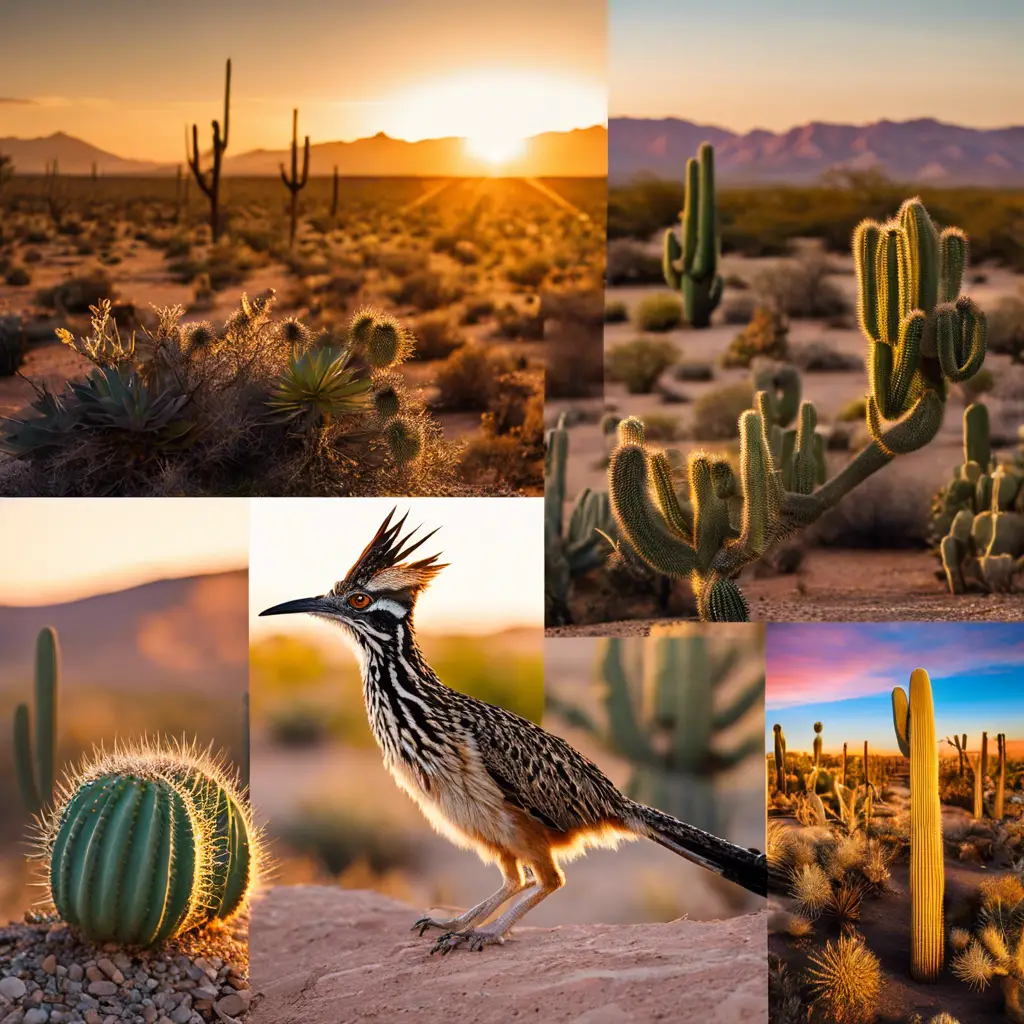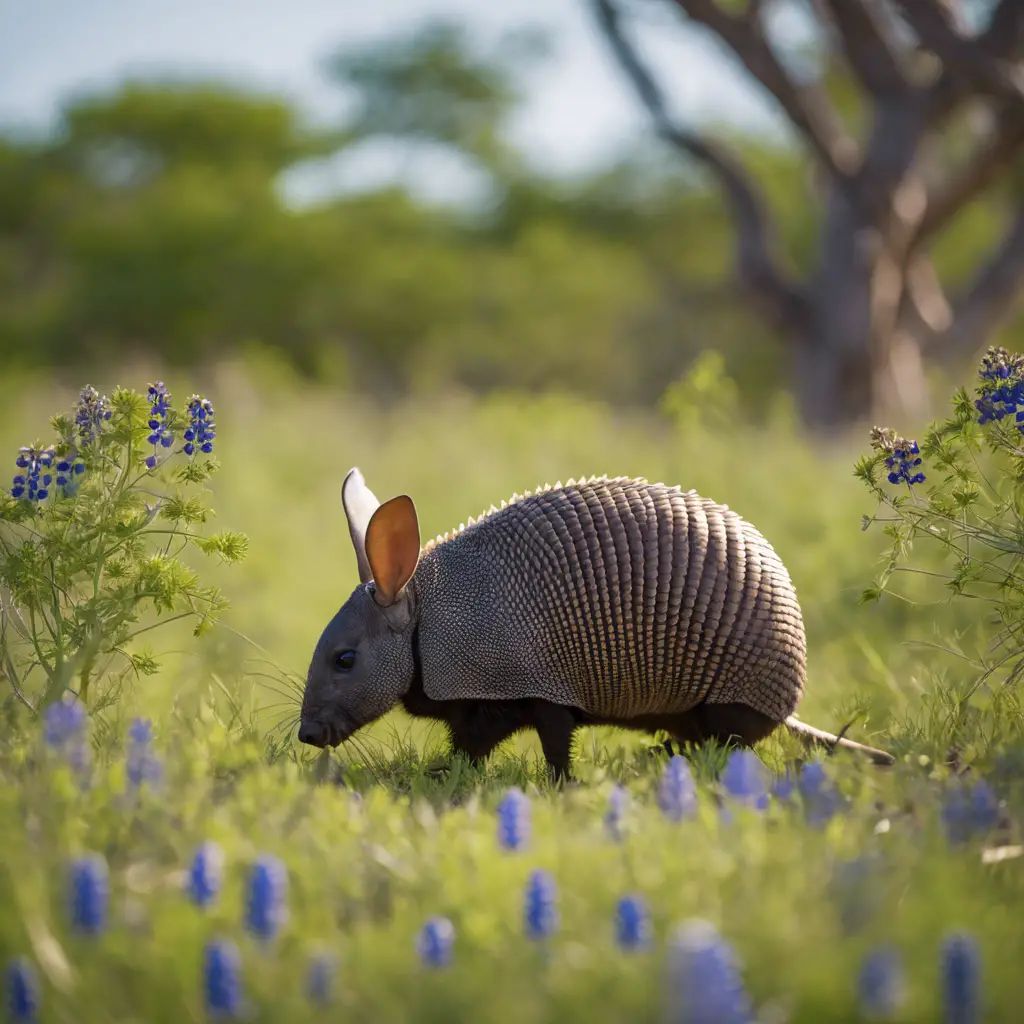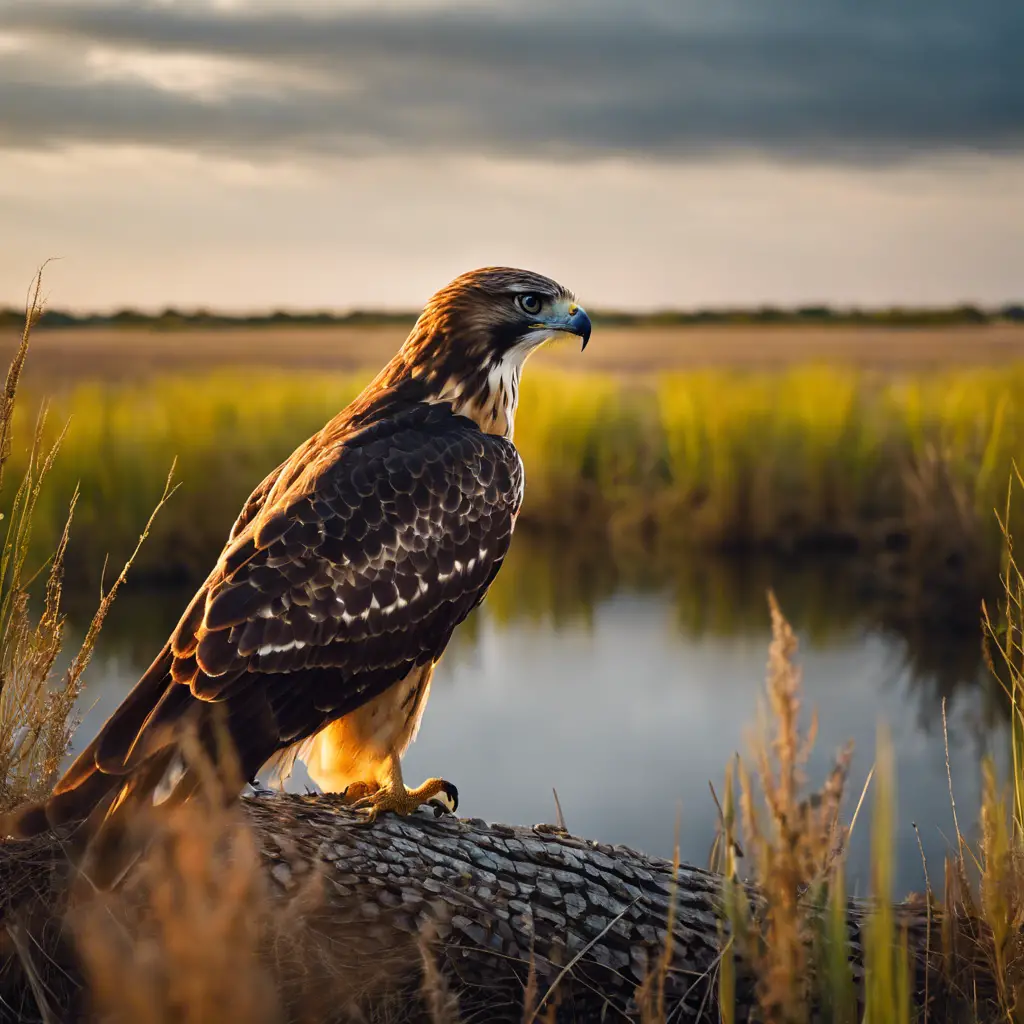If you’re curious about the woodpeckers that call Texas home, look no further. In this article, we’ll delve into the fascinating world of woodpeckers in Texas.
From the diminutive Downy Woodpecker to the majestic Pileated Woodpecker, you’ll discover the diverse species that inhabit this region.
Learn about their distinctive features, habitats, and behaviors.
By the end, you’ll have a newfound appreciation for these remarkable birds and the important role they play in Texas’ ecosystem.
Key Takeaways
- There are several species of woodpeckers found in Texas, including the Downy Woodpecker, Red-bellied Woodpecker, Pileated Woodpecker, Red-headed Woodpecker, and Hairy Woodpecker.
- Each woodpecker species has its own specific habitat preferences, ranging from deciduous forests and woodlands to suburban areas and urban areas.
- Woodpeckers play important ecological roles, such as dispersing oak tree seeds, aiding in forest regeneration, facilitating ecosystem recovery after fires, and creating cavities for other species.
- Conservation efforts are in place for certain woodpecker species, including the Red-headed Woodpecker and Ivory-billed Woodpecker, due to their declining populations and the need for habitat protection and restoration.
Downy Woodpecker
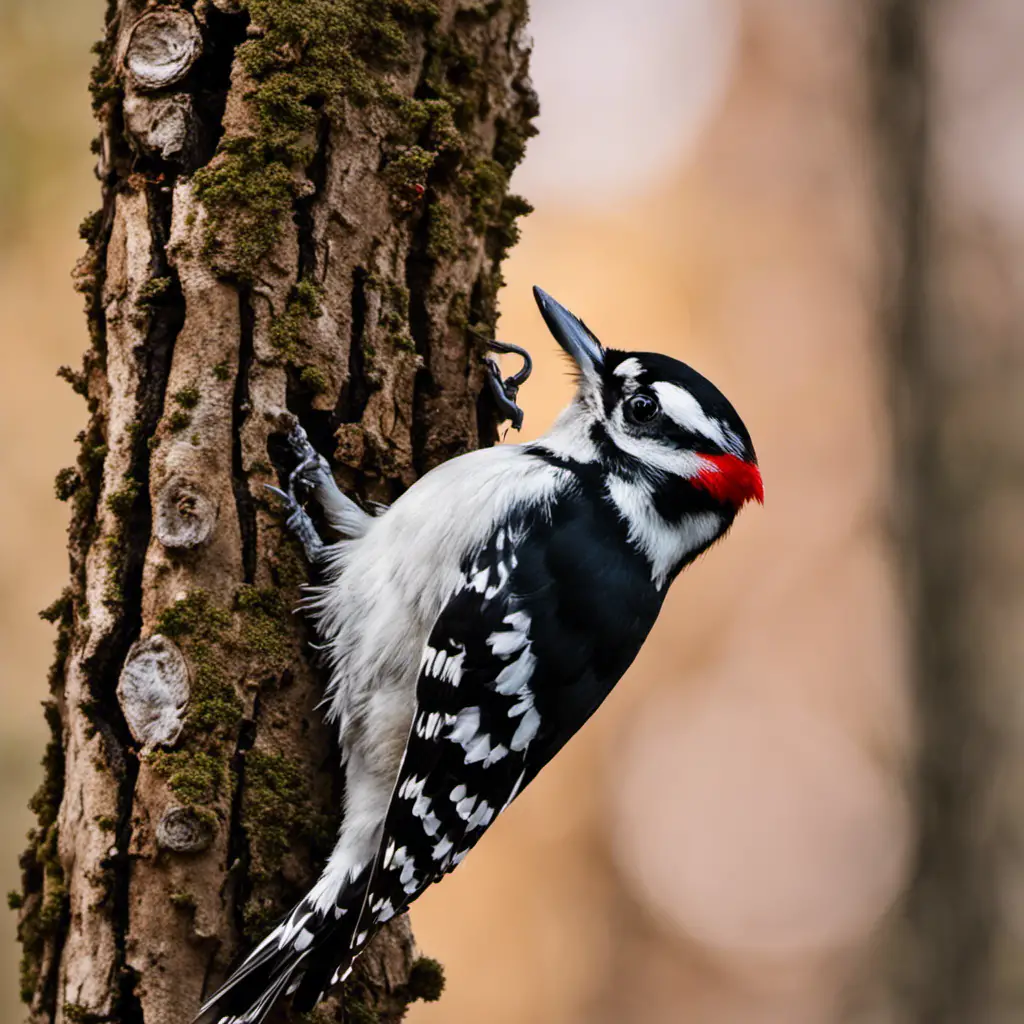
You should definitely check out the Downy Woodpecker, it’s a fascinating bird to observe!
This small woodpecker species, scientific name Picoides pubescens, can be easily recognized by its distinctive black and white plumage and small size.
The Downy Woodpecker is found throughout North America, including Texas, making it a common sight in wooded areas, parks, and even suburban gardens.
It prefers deciduous forests and woodlands, but can also be found in orchards and residential areas with suitable trees for foraging and nesting.
The Downy Woodpecker has a wide range, extending from southern Canada to central Mexico.
Its habitat and feeding preferences make it well-suited for urban and suburban environments, making it a delightful bird to observe in your own backyard.
Red-bellied Woodpecker

Have you seen the Red-bellied Woodpecker? It’s known for its vibrant red head and its unique ability to store food in tree crevices.
The Red-bellied Woodpecker (Melanerpes carolinus) is a medium-sized woodpecker found in eastern North America, including Texas. Its habitat includes deciduous forests, woodlands, and suburban areas with mature trees. This species prefers open woodlands with a mix of trees, providing plenty of foraging opportunities.
The Red-bellied Woodpecker is an omnivorous species, feeding on insects, fruits, nuts, and seeds. It uses its strong bill to excavate cavities in dead or decaying trees for nesting and roosting.
This woodpecker is known for its distinctive ‘churr’ call and drumming sounds, which it uses to communicate with other individuals.
Observing the Red-bellied Woodpecker’s behavior can provide valuable insights into its foraging techniques and social interactions.
Pileated Woodpecker
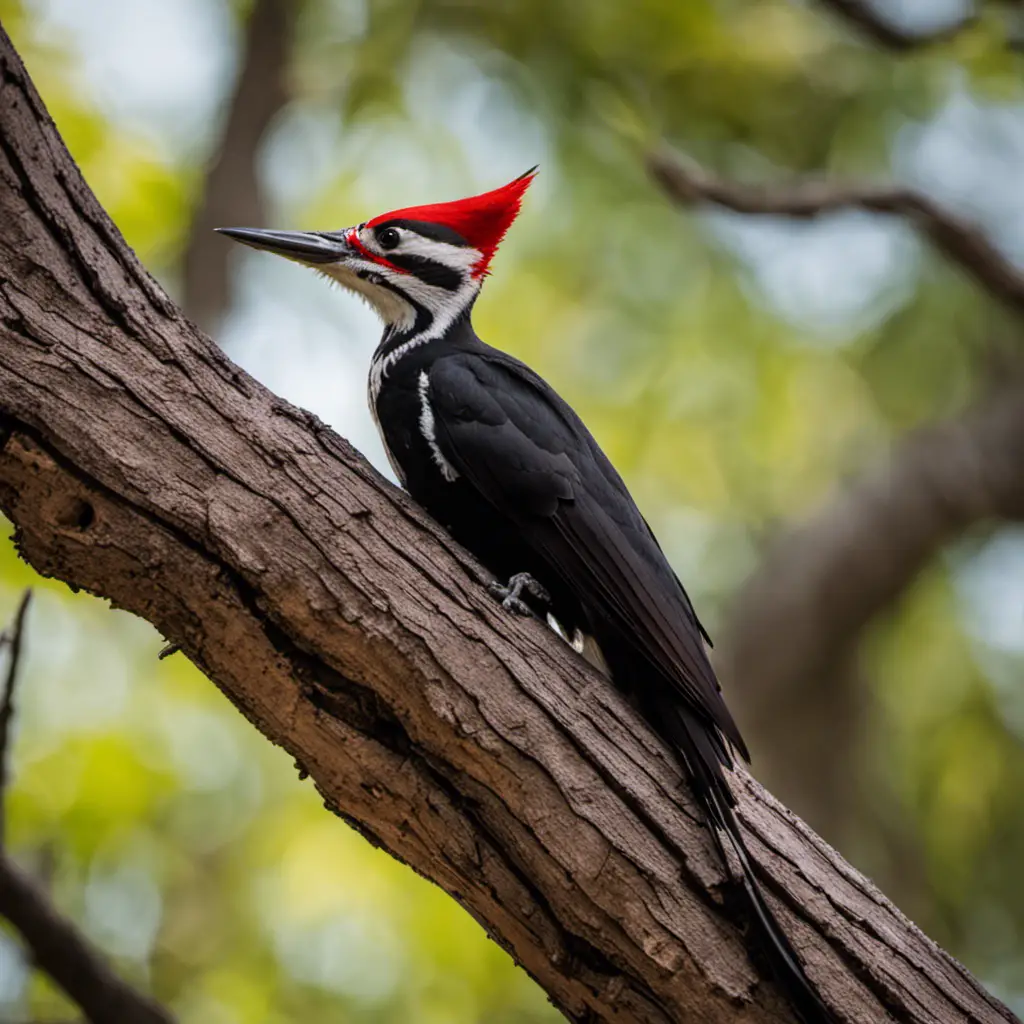
Do you know where to find the Pileated Woodpecker, and have you ever seen one in person?
The Pileated Woodpecker (Dryocopus pileatus) is a large, striking bird that can be found in mature forests across North America, including parts of Texas. Its preferred habitat consists of large tracts of forest with abundant dead trees or snags, which provide nesting and foraging opportunities.
These woodpeckers are known for their distinctive behavior, including their loud drumming sounds as they excavate rectangular-shaped holes in trees to search for insects or create nest cavities. They also have a unique feeding habit of peeling bark off trees to access ant colonies.
Pileated Woodpeckers are highly territorial and can be observed engaging in territorial drumming and vocalizations. If you happen to spot one in person, consider yourself lucky as they’re a fascinating species to observe in their natural habitat.
Red-headed Woodpecker

If you’re in Texas, keep an eye out for the Red-headed Woodpecker, as they can be found in various habitats across the state. This stunning bird, with its vibrant red head and black and white body, is a fascinating species to observe. The Red-headed Woodpecker can be found in forests, woodlands, and even urban areas, making it a versatile species in terms of habitat. Conservation efforts have been put in place to protect the Red-headed Woodpecker and its habitat, as deforestation and urbanization pose threats to its population. In terms of behavior and feeding habits, this woodpecker is known for its drumming on tree trunks and its ability to catch insects in mid-air. It also feeds on a variety of fruits and nuts. By understanding the habitat and conservation efforts, as well as the behavior and feeding habits of the Red-headed Woodpecker, we can better appreciate and protect this beautiful species.
| Habitat | Conservation Efforts | Behavior and Feeding Habits |
|---|---|---|
| Forests | Protected areas | Drumming on tree trunks |
| Woodlands | Reforestation | Catching insects in mid-air |
| Urban areas | Habitat preservation | Feeding on fruits and nuts |
Hairy Woodpecker

You can easily distinguish the Hairy Woodpecker from the Downy Woodpecker by looking for its larger size and longer bill. The Hairy Woodpecker, scientifically known as Picoides villosus, is a medium-sized woodpecker found in North America.
Here are some interesting facts about the Hairy Woodpecker:
- Nesting Habits:
- The Hairy Woodpecker excavates its nest in dead or decaying trees, usually at a height of 10 to 30 feet above the ground.
- The nest cavity is typically lined with wood chips and other soft materials.
- Both male and female Hairy Woodpeckers take part in excavating the nest and caring for the eggs and young.
- Feeding Behavior:
- The Hairy Woodpecker feeds primarily on insects, especially wood-boring beetles, ants, and caterpillars.
- It also consumes tree sap and occasionally feeds on berries and seeds.
- This woodpecker uses its strong bill to peck into tree bark in search of hidden insects, and it can also catch flying insects in mid-air.
Acorn Woodpecker

The Acorn Woodpecker is known for its unique behavior, as it stores thousands of acorns in specially designed granaries. This bird species is commonly found in oak woodlands of western North America.
When it comes to nesting habits, Acorn Woodpeckers have a cooperative breeding system where several males and females work together to excavate nest cavities. These cavities are typically found in dead trees or in live trees with softened wood.
As for their diet preferences, Acorn Woodpeckers primarily feed on acorns, hence their name. They’ve a specialized bill that helps them extract acorns from trees and they store them in granaries for future use. In addition to acorns, they also consume insects, sap, and fruits.
Acorn Woodpeckers play a crucial role in dispersing oak tree seeds and influencing forest regeneration.
Ladder-backed Woodpecker
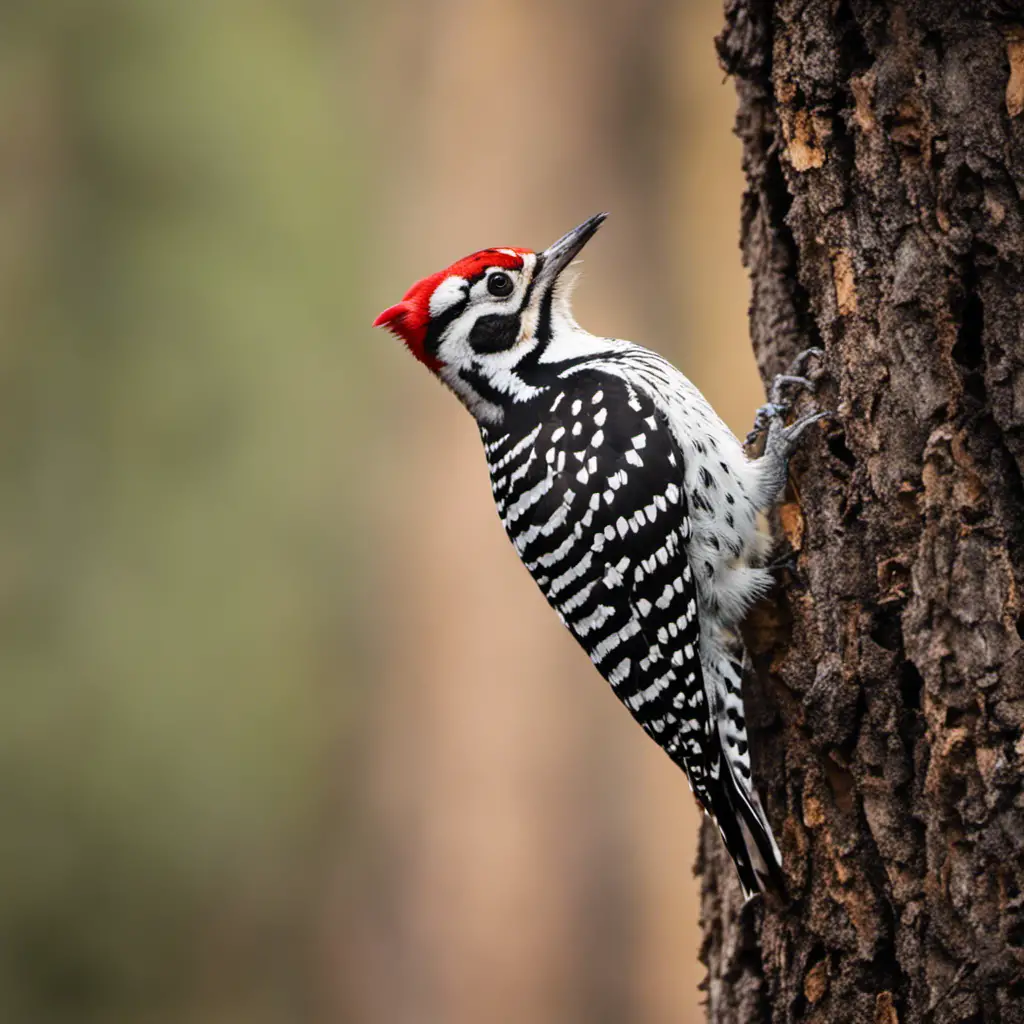
When observing woodpeckers in Texas, you may come across the ladder-backed woodpecker, which is known for its distinctive black and white ladder-like pattern on its back. This species, scientific name Picoides scalaris, has specific habitat preferences and nesting behaviors that contribute to its survival and reproductive success.
Habitat preferences:
- The ladder-backed woodpecker is commonly found in arid and semi-arid regions, such as deserts, scrublands, and open woodlands.
- They prefer habitats with an abundance of cacti, yuccas, and other desert plants, as these provide both food and suitable nesting sites.
- This woodpecker species can also be found in urban areas with mature trees and parks.
Nesting behavior:
- Ladder-backed woodpeckers excavate their own nest cavities, typically in dead or decaying trees.
- They prefer to nest in saguaro cacti and mesquite trees, as these provide a sturdy foundation for their nests.
- Both male and female woodpeckers take turns incubating the eggs and caring for the young, displaying a cooperative breeding behavior.
Understanding the ladder-backed woodpecker’s habitat preferences and nesting behavior is crucial for conservation efforts to protect their populations and ensure their continued presence in Texas.
Golden-fronted Woodpecker
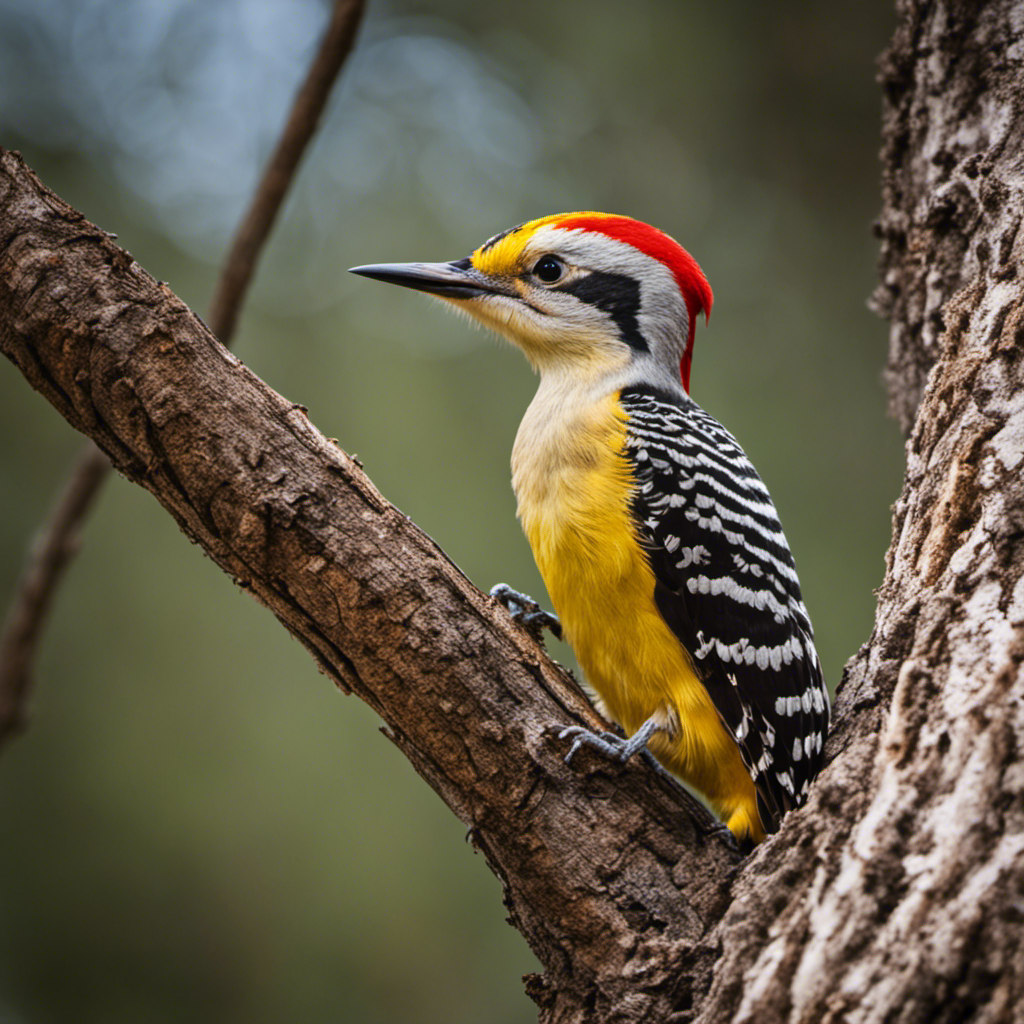
Do you know where the Golden-fronted Woodpecker can be found in Texas?
The Golden-fronted Woodpecker (Melanerpes aurifrons) is a common species found in the southern United States, including Texas. It’s primarily found in the western and central parts of the state, where it inhabits a variety of habitats including oak woodlands, mesquite brushlands, and riparian areas. This woodpecker is known for its distinctive appearance, with a golden-yellow forehead and a red crown patch. It feeds on insects, fruits, and seeds, and is also known to excavate nest cavities in dead trees.
Conservation efforts for the Golden-fronted Woodpecker focus on maintaining and restoring its habitat. Population trends for this species are generally stable, although local declines have been observed due to habitat loss and fragmentation. Efforts are being made to protect and manage the woodpecker’s habitat through land conservation and forest management practices. Monitoring populations and studying their ecology are also important for understanding the species’ conservation needs.
Overall, the Golden-fronted Woodpecker continues to be an important and iconic species in the Texas landscape.
Black-backed Woodpecker

Have you ever seen a Black-backed Woodpecker foraging for insects on burnt trees? This unique species of woodpecker can be found in the Texas habitat, where it exhibits fascinating behaviors and adaptations.
Here are some interesting facts about the Black-backed Woodpecker:
- They’re specially adapted to thrive in post-fire environments, where they can easily locate and access insect larvae in burnt trees.
- Unlike other woodpeckers, the Black-backed Woodpecker prefers to forage on bark rather than drilling into the wood.
- Their black and white plumage serves as excellent camouflage against the charred tree trunks, allowing them to blend in seamlessly with their surroundings.
- Due to their presence in fire-prone areas, the Black-backed Woodpecker plays an important role in ecosystem recovery by aiding in the decomposition of burnt trees and facilitating new growth.
These remarkable behaviors and adaptations make the Black-backed Woodpecker a fascinating species to observe in the Texas habitat.
Ivory-billed Woodpecker

You should definitely join the birdwatching expedition in Texas to catch a glimpse of the elusive Ivory-billed Woodpecker, a rare and endangered species known for its majestic beauty and haunting call.
Conservation efforts for the Ivory-billed Woodpecker have been ongoing for decades due to its historical significance and declining population. Once thought to be extinct, the rediscovery of this species in the early 2000s sparked renewed interest in its conservation.
The Ivory-billed Woodpecker is a keystone species in the ecosystem, playing a vital role in maintaining forest health through its foraging habits and cavity creation. Efforts to protect its habitat, such as the establishment of protected areas and habitat restoration projects, are crucial in ensuring the survival of this iconic bird.
Frequently Asked Questions
What Is the Average Lifespan of a Woodpecker?
On average, a woodpecker’s lifespan is around 4-11 years. However, this can vary depending on factors such as species, habitat, and availability of food. Woodpeckers exhibit unique behavior and have a diet primarily consisting of insects and tree sap.
How Many Species of Woodpeckers Are Found in Texas?
In Texas, numerous woodpecker species can be found. Their behavior and feeding habits vary, with some species foraging for insects on trees, while others excavate cavities for nesting and drumming purposes.
What Is the Preferred Habitat for Woodpeckers in Texas?
Woodpeckers in Texas have specific nesting habits and preferred habitats. When bird watching, it is important to understand their needs. By studying their preferred habitat, we can gain insight into their behaviors and conservation efforts.
How Do Woodpeckers Communicate With Each Other?
Woodpeckers communicate through various vocalizations and territorial behaviors. They use drumming, calls, and body movements to communicate with each other. Their social structure is based on nesting and feeding habits, and their population trends are closely monitored for conservation efforts.
Are Woodpeckers in Texas Considered Endangered or Threatened Species?
Woodpeckers in Texas are not considered endangered or threatened species. However, their populations are impacted by habitat loss. Conservation efforts focus on protecting and restoring their habitats to ensure their long-term survival.
Q: What are the most common woodpeckers in Texas?
A: The most common woodpeckers in Texas include the red-cockaded woodpecker, northern flicker, and yellow-bellied sapsucker.
Q: Where can I find woodpeckers in Texas?
A: Woodpeckers can be found throughout Texas, but they are particularly common in the eastern Texas pineywoods region.
Q: How can I attract woodpeckers to my yard?
A: To attract woodpeckers to your yard, you can provide a bird feeder with food sources such as black oil sunflower seeds.
Q: How many species of woodpeckers are there in Texas?
A: There are 14 species of woodpeckers that can be found in Texas.
Q: What are some types of woodpeckers in Texas?
A: Some types of woodpeckers in Texas include the red-cockaded woodpecker, northern flicker, and yellow-bellied sapsucker.
Q: What are the characteristics of the red-cockaded woodpecker?
A: The red-cockaded woodpecker is one of the most common woodpecker species in Texas. It has black and white feathers with a small red patch on its head.
Q: When is the breeding season for woodpeckers in Texas?
A: The breeding season for woodpeckers in Texas typically occurs in the spring.
Q: What is the habitat of the red-cockaded woodpecker?
A: The red-cockaded woodpecker is commonly found in pine forests, particularly in the eastern Texas pineywoods region.
Q: Can woodpeckers be found in all regions of Texas?
A: Yes, woodpeckers can be found in all regions of Texas, from the far east to the west Texas mountains.
Q: What are some other species of woodpeckers in Texas?
A: Some other species of woodpeckers in Texas include the red-naped sapsucker and the downy woodpecker.
Conclusion
In conclusion, Texas is home to a diverse array of woodpecker species.
The Downy Woodpecker, Red-bellied Woodpecker, Pileated Woodpecker, Red-headed Woodpecker, Hairy Woodpecker, Ladder-backed Woodpecker, Golden-fronted Woodpecker, Black-backed Woodpecker, and even the elusive Ivory-billed Woodpecker can be found within the state.
Each species has its own unique characteristics and habitats, contributing to the overall richness of woodpecker diversity in Texas.
Further research and conservation efforts are essential to ensure the preservation of these fascinating birds and their ecosystems.

An avid ornithologist, zoologist and biologist with an unwavering passion for birds and wild animals.
Dr. Wilson’s journey in ornithology began in childhood and led him to obtain a Ph.D. in Ornithology from the prestigious Avian Research Institute. He has worked closely with renowned experts in the field and conducted extensive research and field studies globally.

